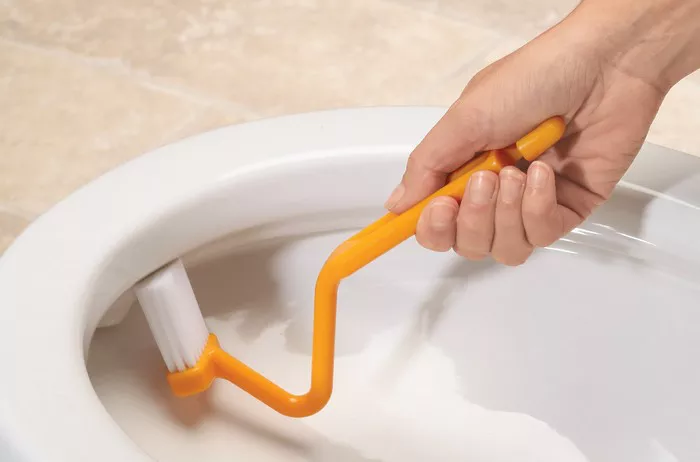Maintaining a clean and hygienic bathroom is essential for a healthy home environment. One of the key tools in achieving this is the humble toilet brush. Despite its simplicity, proper use of a toilet brush can significantly contribute to a spotless and odor-free toilet. In this comprehensive guide, we’ll delve into the intricacies of using a toilet brush effectively, ensuring your bathroom stays fresh and clean.
I. Introduction to Toilet Brush
Before diving into the specifics of using a toilet brush, let’s understand its basic components. A typical toilet brush consists of a long handle and bristles attached to one end. The handle is designed for easy grip and maneuverability, while the bristles are usually made of durable materials such as plastic or nylon. These bristles are arranged in a brush head to effectively scrub away dirt and stains from toilet surfaces.
II. Steps for Using a Toilet Brush
Using a toilet brush may seem straightforward, but there are certain steps to follow to ensure optimal cleaning results:
1. Prepare the Toilet: Before starting, ensure the toilet bowl is flushed to remove any waste. This will make it easier to focus on cleaning without obstruction.
2. Apply Cleaning Solution: For effective cleaning, apply a suitable toilet bowl cleaner or disinfectant directly into the bowl. Allow the cleaner to sit for a few minutes to break down stains and kill germs.
3. Scrub the Bowl: With the toilet brush in hand, insert the brush head into the toilet bowl. Use gentle yet firm pressure to scrub the inner surfaces of the bowl, including under the rim and around the waterline. Pay particular attention to areas with visible stains or discoloration.
4. Use a Circular Motion: To maximize cleaning efficiency, use a circular motion while scrubbing with the toilet brush. This helps to dislodge stubborn dirt and ensures thorough coverage of all surfaces.
5. Rinse the Brush: Periodically, remove the toilet brush from the bowl and rinse it under clean water. This helps to remove loosened debris and prevent the brush from becoming clogged with waste.
6. Flush and Repeat (if necessary): Once you’ve scrubbed the entire bowl, flush the toilet to rinse away any remaining cleaner and debris. If stains persist, repeat the cleaning process until the bowl is sparkling clean.
7. Clean the Brush: After use, thoroughly rinse the toilet brush under running water to remove any lingering residue. For deeper cleaning, you can soak the brush in a mixture of water and bleach or vinegar to disinfect it.
III. Tips for Effective Toilet Brush Use
To achieve the best results when using a toilet brush, consider the following tips:
1. Regular Maintenance: Make it a habit to clean your toilet brush after each use to prevent the buildup of bacteria and odors.
2. Replace When Necessary: Over time, toilet brush bristles may wear out or become damaged. Replace your toilet brush periodically to ensure optimal cleaning performance.
3. Store Properly: After use, allow the toilet brush to air dry completely before returning it to its holder. Avoid storing a wet brush as it can promote bacterial growth.
4. Use Protective Gear: If you’re concerned about coming into direct contact with toilet bowl water or cleaning chemicals, consider wearing gloves while using the toilet brush.
IV. FAQs
Q1: How often should I clean my toilet brush?
A1: It’s essential to clean your toilet brush after each use to prevent the accumulation of bacteria and odors. Rinse the brush thoroughly under running water, and if necessary, soak it in a disinfectant solution to ensure proper hygiene. Additionally, consider replacing your toilet brush every few months, or as soon as the bristles show signs of wear or damage.
Q2: Can I use a toilet brush without cleaner?
A2: While using a toilet brush without cleaner is possible, it may not yield the best cleaning results. Toilet bowl cleaners are specifically formulated to break down stains, kill germs, and deodorize the toilet bowl. Without cleaner, you may find it challenging to remove stubborn stains and achieve a thorough clean. However, in a pinch, you can use a mixture of baking soda and vinegar as a natural alternative to commercial cleaners.
Q3: Is it necessary to wear gloves when using a toilet brush?
A3: Wearing gloves while using a toilet brush is a matter of personal preference and comfort. Some individuals prefer to wear gloves to protect their hands from coming into direct contact with toilet bowl water and cleaning chemicals. Gloves can also provide a barrier against bacteria and germs. However, if you practice proper hand hygiene and thoroughly wash your hands after cleaning the toilet, wearing gloves may not be necessary for everyone. Ultimately, the decision to wear gloves depends on your level of comfort and preference for cleanliness.

